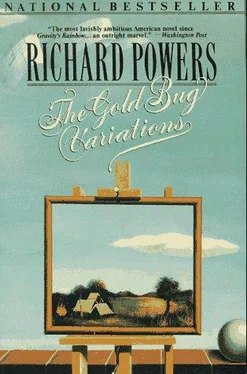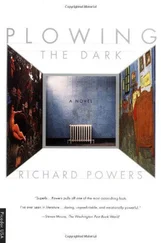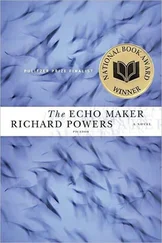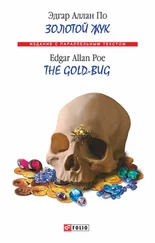Richard Powers - Gold Bug Variations
Здесь есть возможность читать онлайн «Richard Powers - Gold Bug Variations» весь текст электронной книги совершенно бесплатно (целиком полную версию без сокращений). В некоторых случаях можно слушать аудио, скачать через торрент в формате fb2 и присутствует краткое содержание. Год выпуска: 1991, Издательство: Harper Perennial, Жанр: Современная проза, на английском языке. Описание произведения, (предисловие) а так же отзывы посетителей доступны на портале библиотеки ЛибКат.
- Название:Gold Bug Variations
- Автор:
- Издательство:Harper Perennial
- Жанр:
- Год:1991
- ISBN:нет данных
- Рейтинг книги:5 / 5. Голосов: 1
-
Избранное:Добавить в избранное
- Отзывы:
-
Ваша оценка:
- 100
- 1
- 2
- 3
- 4
- 5
Gold Bug Variations: краткое содержание, описание и аннотация
Предлагаем к чтению аннотацию, описание, краткое содержание или предисловие (зависит от того, что написал сам автор книги «Gold Bug Variations»). Если вы не нашли необходимую информацию о книге — напишите в комментариях, мы постараемся отыскать её.
Gold Bug Variations — читать онлайн бесплатно полную книгу (весь текст) целиком
Ниже представлен текст книги, разбитый по страницам. Система сохранения места последней прочитанной страницы, позволяет с удобством читать онлайн бесплатно книгу «Gold Bug Variations», без необходимости каждый раз заново искать на чём Вы остановились. Поставьте закладку, и сможете в любой момент перейти на страницу, на которой закончили чтение.
Интервал:
Закладка:
Ulrich is a bright spot in the painful group grope toward mi-crounderstanding. Cyfer's leader runs the session as a benevolent dictator, neither encouraging nor condescending to his charges. He follows the time-tested policy: let intellect propose and measurement dispose. He fills the chalkboard with A's, T's, G's, C's, unzipping helices, decoding boxes, templates, diamonds, triangles, every model short of hex signs. He mutters out loud from time to time, as do the rest of the team. But Ulrich's mutterings hold the floor. The part of Ulrich's presentation that most captivates Ressler is not molecular, but rhetorical. To one beautiful scheme that reveals a flaw, rolls belly-up against experimental evidence, the chief pronounces stoically, "So goes poetry. Shipwrecked on shoals of fact."
Ulrich possesses that critical leadership skill in the age of Big Science: the ability to inspire others to work with devotion. Members compete to win the next stroke of praise. Ulrich makes them each sense that all of their names will appear on the resulting paper. Still, Ressler declines to put forth his private bias on how to begin cracking the coding problem. Reticence is not an issue, nor fear of bruised ego. In his freshman session at the public trading post, the small crystal of clarity he now possesses might get lost in the hypothesizing pandemonium. In a few weeks, after he learns the ropes, he'll lay out his vein, the method so new that he himself can't formulate it yet.
As Ulrich smoothly wraps up the Blue Sky session before it turns to Gray and Partly Cloudy, someone slips Ressler a note. More spectral theory, a spidery nineteenth-century hand:
Dr. Ressler—
Dismissals of verse notwithstanding, Fearless Leader harbors a closet predisposition to literature. Ulrich has contracted Poe's Gold Bug.
Communicable, I gather.
J.K.
The syntax seems a sequel to this session in cryptography. But the note, on second reading, begins to make marginal sense as plaintext. There already is a "J.K." in the room; no need for letter substitution. Yet the note resists ultimate understanding. It doesn't occur to him, as the brainstorm session breaks up, to ask the woman herself what she means. He watches her leave the room and looks again at the note, the first he's received in twenty years of school. He follows Dr. Koss with his eyes across the lab and out the door. Monk Mendel's chief lesson returns from first-year genetics: the rift between inner genotype and outer phenotype. Surfaces lie.
Back in his bachelor and still unfurnished flat, Ressler lies in his bunk at night, wrapped in the barrack walls, the cradling vacancy of his adopted town. The day's stimulation prevents sleep. He runs through the proposed structure currently entrancing all biology except Woytowich and a few lone holdouts. The spiral molecular staircase — two paired railings sinuously twisting around one another, eternally unmeeting snakes caught in a caduceus — becomes in his fueled brain the stairs of Robeson's spiritual: Jacob's Ladder, the two-lane highway to higher kingdoms. Angels are caught descending and ascending in two solemn, frozen, opposing columns. In his soporific reverie, four kinds of angels twist along the golden stairs. Bright angels and dark, of both sexes. Four angel varieties freeze in two adjacent queues up and down the case, each stuck on a step that it shares with its exact counterpart. Every bright man opposite a dark woman. Every bright woman, a dark man. Fitful in his bunk, in the blackness, the unappeasable modelmaking urge. Four angel varieties to signify DNA's four bases: thymine, cytosine, adenine, and guanine. Jacob's helical staircase ladder conjured out of a single strand of nucleic acid.
How indispensable models have been in the fray to date! Watson and Crick did the trick with tin shapes, interlocking jigsaw pieces that refused to combine in any configuration consistent with the data except the spiral staircase. The great Pauling's snips of accordion cardboard are an industry legend, an industry joke until laughter was hushed by the tool's repeated success. Pauling's children — molecular spheres and dowels — pop up in classrooms, raising a race of clear-eyed students whose innovative exhalations already warm Ressler's neck. All the models agree: life science, to advance at all, cannot start with big and hope to pull it apart into underpinning little. It must begin with the constituents and tease them into a structure consistent with observation. Cyfer needs a model as simple and labile as baby blocks, a breathtaking Tinkertoy indistinguishable from the thing it imitates.
Four years ago Ressler, along with every other hapless haplo-type, noticed that the double-spiral staircase embodies two identical informational queues. The ascending angel order complements and mirrors the descending stream. Wholly redundant. Each angel-file sequence can be entirely recreated from the other. Bright and dark men, dark and bright women: each pair-half uniquely mated, each edge of the staircase carrying the same message. All there in Crick and Watson's tantalizing summary: "It has not escaped our notice that the specific pairing we have postulated immediately suggests a possible copying mechanism for the genetic material." The angel-files in each half-stair must somehow be capable of latching on to their proper mates out of angelic bouillabaisse. Chemical lightning, sundering the staircase down its middle, unzipping it, creates two severed parades, each capable of recreating the entire original ladder. Ressler, in his bunk, has the wind knocked out of him by the ingenuity, the rightness of it: a long molecular chain, stupefyingly massive but simple, obeying nothing but chemical requirements, somehow lucks upon viability — the fundamental, self-replicating machine.
Stairway replication, an inanimate molecule's ability to double, is just the tip of proliferate miracle. Somehow, incomprehensibly tortuously simply, coded in permutations of brights, darks, males, and females — four bases alone — is all the sequence needed to conduct the full angel choir. On this dream of spiral ladders, he lulls himself into brief, shallow sleep. Rest does not last long, nor does he wake refreshed. He is back in the stacks at opening, armed with the tip-off Jeanette Koss has passed him. He came to Illinois to crack the nucleic code. To date the only triplets he's gone up against are Dewey Decimal. He looks up her clue in the card catalog: Poe's "The Gold Bug." Mystery, suspense: a story in a thousand anthologies. It's been years since he's read any fiction except the Oppenheimer charges. But the library jump-table leads him to 813 as easily as if he were a regular.
Squatting between two metal shelves, Ressler loses himself in the adventure. Discovery — a piece of heated parchment reveals secret writing. Pictograph of baby goat identifies author as Captain Kidd, language of cipher as English. Simple letter frequency and word-pattern trick leads scholar to pirate's treasure. But directions to treasure are themselves a coded algorithm for unburying. Two men and blackfella servant, applying human ingenuity, measured paces, and plumb line, crack third-level mystery and uncover wealth beyond wildest dreams. Only at story's end does he emerge, shake off the fictional spell. "Gold Bug" is the ticket all right; he's come to the right place.
If he understands Dr. Koss's warning correctly, Ulrich may be in danger of confusing the message of base-string sequences with their translation mechanism. Bulling through frequency counts and base-order mapping will never reveal a simple rule equating the impenetrable archive of nucleic rungs with hair color, hand length, texture of skin. The game is immensely bigger; much more than gene-reading is at stake. To search for sequence substitution, to pan for genetic gold bugs, would be tantamount to learning a foreign language armed with only a translating dictionary. They'd get no farther than a refinement of Morgan's endless generations of Drosophila: chromosome bump X produces white eyes. A swap of one name for the other, no more than a means of reading individual messages without ever getting fluent in the tongue they're written in.
Читать дальшеИнтервал:
Закладка:
Похожие книги на «Gold Bug Variations»
Представляем Вашему вниманию похожие книги на «Gold Bug Variations» списком для выбора. Мы отобрали схожую по названию и смыслу литературу в надежде предоставить читателям больше вариантов отыскать новые, интересные, ещё непрочитанные произведения.
Обсуждение, отзывы о книге «Gold Bug Variations» и просто собственные мнения читателей. Оставьте ваши комментарии, напишите, что Вы думаете о произведении, его смысле или главных героях. Укажите что конкретно понравилось, а что нет, и почему Вы так считаете.












